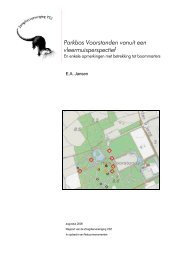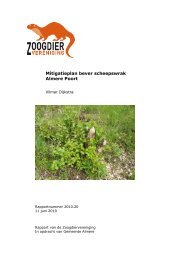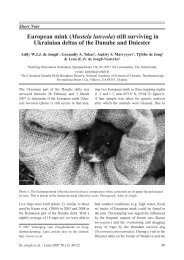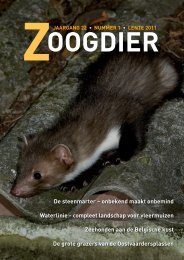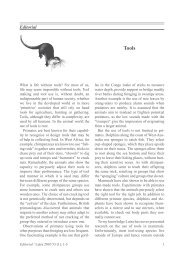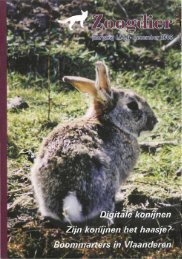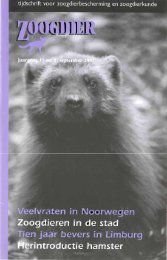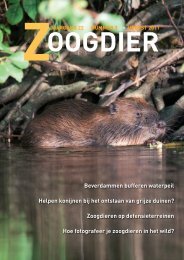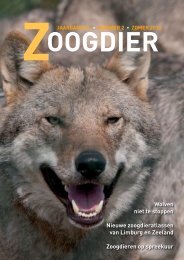binnenwerk 48-2-2005 - De Zoogdiervereniging
binnenwerk 48-2-2005 - De Zoogdiervereniging
binnenwerk 48-2-2005 - De Zoogdiervereniging
Create successful ePaper yourself
Turn your PDF publications into a flip-book with our unique Google optimized e-Paper software.
Photograph 6. Tail of the wildcat (Felis silvestris) found on 1 November 2002 as a road casualty near Vaalsbroek(province of Limburg); note the tick tail, the more or less clearly visible rings and the black knob. Photograph:Annemarie van Diepenbeek.The cat caught near Heeze (province ofNoord-Brabant)On the 1st of March 2004 a cat was caught ina wire trap cage in a coop at the edge of the“Hubertusbossen” forest, near Heeze, in theProvince of Noord-Brabant (see also table 2).This forest, located directly east of the townof Heeze, is a nature area of 750 ha, mainlyconsisting of varied deciduous and coniferouswoods. The surroundings are diverse, withbrook valleys, pastures, arable land and theStrabrechtse Heide, a wood and heathland areaof 1,100 ha. The trap cage was set becausein previous nights two chickens had been killedin the hen house and partially eaten. Thetrap cage was baited with one of the dead chickens.Once trapped the cat behaved extremely shylyand snarled furiously. It was anaesthetised by thelocal veterinarian to enable one of the authors(A. van Diepenbeek) to measure the animal, andcollect a hair sample for DNA analysis. Later thesame evening the animal was released in theHugterheide, a nature area about eight kilometresfrom where the animal was captured. Theowner of the chickens objected to the cat beingreleased close to where it was trapped and hepromised to improve the fencing of the chickenrun in order to prevent predators from breakingin.Physically this was a rather meagre tomcat ofabout one year old (see photographs 7-9) withdeveloped, but not large, testicles. The yellowishgrey coloured fur was more or less clearly visiblystriped; the tail was rather thick and blunt,with a black tip and with 3-5 black rings distributedover the whole tail, the nose leather was78 Canters et al. / Lutra <strong>2005</strong> <strong>48</strong> (2): 67-90



